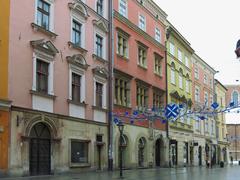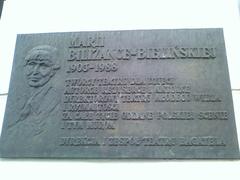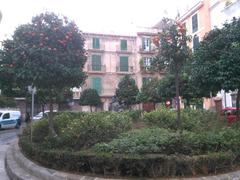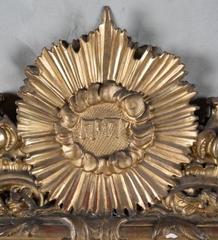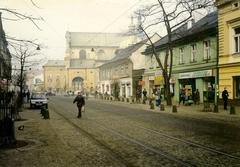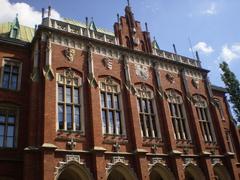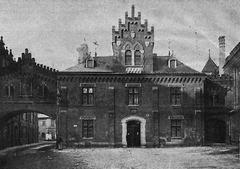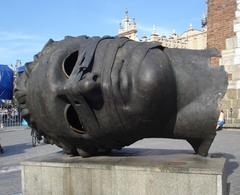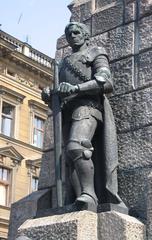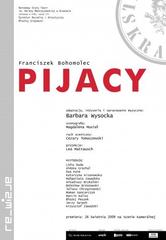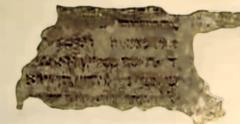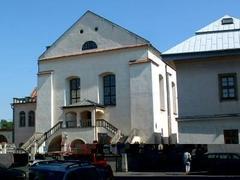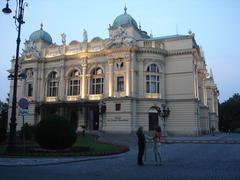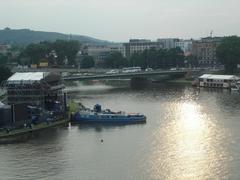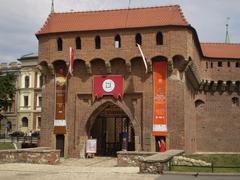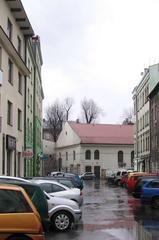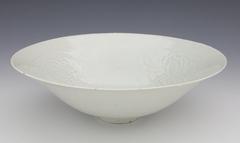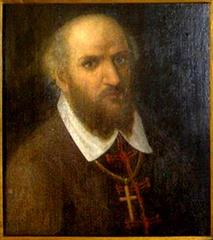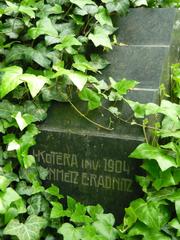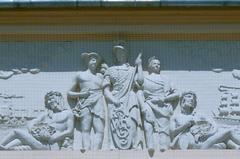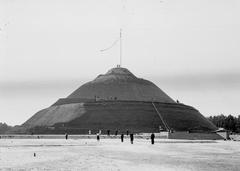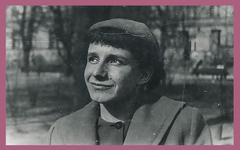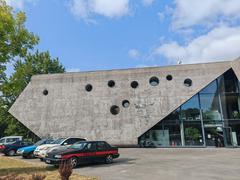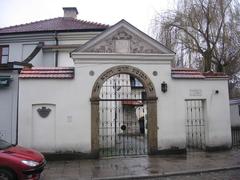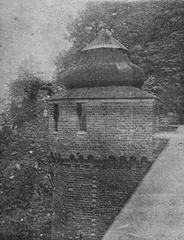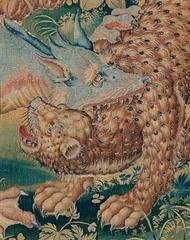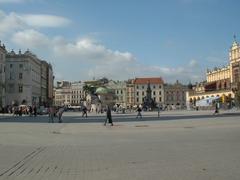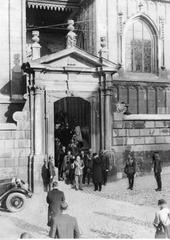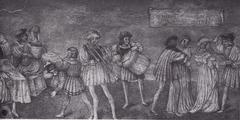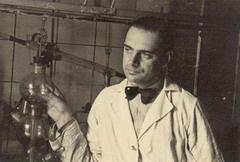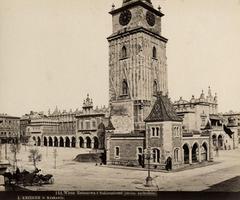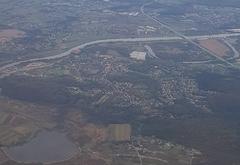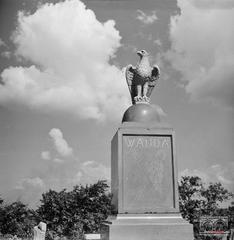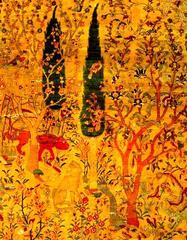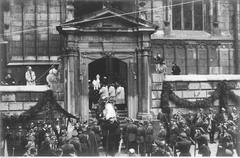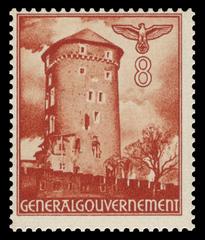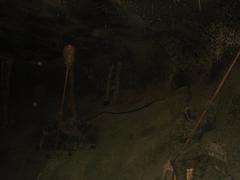Comprehensive Guide to Visiting Sukiennice, Kraków, Poland
Published Date: 17/07/2024
Introduction to Sukiennice
The Sukiennice, also known as the Cloth Hall, stands as one of Kraków’s most iconic landmarks, situated in the heart of the Main Market Square (Rynek Główny). This historical market hall has been a central feature of the city’s commercial and cultural life since the 13th century. Initially established as a hub for trade, the Sukiennice has witnessed numerous transformations and events, reflecting the economic, architectural, and cultural shifts in Kraków and Poland. Today, it remains a vibrant marketplace and a focal point for both locals and tourists. (Krakow Info). This comprehensive guide will delve into the rich history, architectural significance, and practical visitor information for those planning to explore this remarkable monument. Whether you are a history buff, an art enthusiast, or a casual visitor, the Sukiennice offers a unique and memorable experience (National Museum in Krakow).
Table of Contents
- Introduction
- History of Sukiennice
- Sukiennice Today
- Practical Visitor Information
- Frequently Asked Questions (FAQ)
- Conclusion
History of Sukiennice
Origins and Medieval Development
The Sukiennice’s origins date back to the 13th century when it was initially established as a center for trade. The original structure was a simple Gothic building, serving as a hub for the exchange of textiles, spices, leather, and other goods. The strategic location of Kraków on major trade routes contributed to the Cloth Hall’s early success and significance.
Renaissance Transformation
In the mid-16th century, the Sukiennice underwent a significant transformation under the direction of King Sigismund I the Old. The Gothic structure was remodeled in the Renaissance style, which was popular in Europe at the time. The renovation included the addition of a beautiful attic with ornate decorations and a series of arcades on the ground floor. This architectural transformation not only enhanced the aesthetic appeal of the building but also solidified its status as a symbol of Kraków’s prosperity and cultural importance.
Role in Kraków’s Economic Life
Throughout the centuries, the Sukiennice played a crucial role in the economic life of Kraków. It served as a central marketplace where merchants from across Europe gathered to trade goods. The hall was divided into stalls, each specializing in different types of merchandise, from textiles and spices to precious metals and crafts. The bustling market atmosphere made the Sukiennice a vibrant and dynamic place, reflecting the economic vitality of the city.
19th Century Renovations
In the 19th century, the Sukiennice underwent another significant renovation. This time, the changes were driven by the need to modernize the building and adapt it to contemporary needs. The renovation, completed in 1879, was led by architect Tomasz Pryliński. The most notable addition was the neo-Gothic façade, which gave the building its current appearance. The interior was also redesigned to accommodate new commercial activities and public events.
Cultural and Historical Significance
The Sukiennice is not only an architectural gem but also a symbol of Kraków’s rich cultural heritage. Over the centuries, it has witnessed numerous historical events and has been a focal point of the city’s social and cultural life. The building has hosted royal ceremonies, public gatherings, and cultural events, making it an integral part of Kraków’s identity.
Sukiennice Today
Today, the Sukiennice continues to be a major attraction for both locals and tourists. The ground floor still functions as a market, where visitors can purchase traditional Polish crafts, souvenirs, and artworks. The upper floor houses the Gallery of 19th-Century Polish Art, a branch of the National Museum in Kraków. This gallery features an impressive collection of paintings and sculptures by renowned Polish artists, offering visitors a glimpse into the country’s artistic heritage (National Museum in Krakow).
Visitor Tips
For those planning to visit the Sukiennice, here are some useful tips to enhance the experience:
- Opening Hours: The Cloth Hall is open daily, but the hours may vary depending on the season. It is advisable to check the official website for the most up-to-date information.
- Tickets: Admission to the market area is free, but there is an entrance fee for the Gallery of 19th-Century Polish Art. Tickets can be purchased online or at the entrance.
- Guided Tours: To fully appreciate the history and significance of the Sukiennice, consider joining a guided tour. Many local tour operators offer comprehensive tours that include the Cloth Hall and other nearby attractions.
- Accessibility: The Sukiennice is accessible to visitors with disabilities. There are ramps and elevators available to ensure that everyone can enjoy the site.
- Nearby Attractions: The Sukiennice is located in the Main Market Square, which is surrounded by other notable landmarks such as St. Mary’s Basilica, the Town Hall Tower, and the Adam Mickiewicz Monument. Plan to spend some time exploring the square and its surroundings.
Special Events and Photographic Spots
The Sukiennice frequently hosts special events such as art exhibitions, cultural festivals, and public gatherings. Check the official website or local event listings for upcoming events during your visit. For photography enthusiasts, early morning or late evening offers the best lighting conditions to capture the beauty of the Cloth Hall and its surroundings.
Practical Visitor Information
Visiting Hours
The Sukiennice is open daily from 10:00 AM to 8:00 PM, although hours may vary on holidays and special occasions. It is advisable to check the official website for the most current information.
Tickets
Admission to the Gallery of 19th-Century Polish Art costs approximately 20 PLN for adults and 10 PLN for students and seniors. Entrance to the ground floor market area is free.
Travel Tips
The Sukiennice is located in the Main Market Square, easily accessible by foot, public transport, or taxi. Consider visiting early in the morning or late in the afternoon to avoid crowds.
Nearby Attractions
Other nearby attractions include:
- St. Mary’s Basilica: Famous for its stunning altarpiece by Veit Stoss and the hourly trumpet call from its tower (St. Mary’s Basilica).
- Wawel Castle: A historic castle complex that includes the Royal Castle and Wawel Cathedral (Wawel Castle).
- Rynek Underground Museum: Located beneath the Main Market Square, this museum offers a fascinating look at Kraków’s medieval history (Rynek Underground Museum).
Accessibility
The Sukiennice is wheelchair accessible, with elevators available for accessing the upper floors.
Frequently Asked Questions (FAQ)
Q: What are the visiting hours for Sukiennice?
A: The Cloth Hall is open daily from 10:00 AM to 8:00 PM, but hours may vary depending on the season. Check the official website for the most current information.
Q: How much are tickets to the Gallery of 19th-Century Polish Art?
A: Ticket prices vary, and it is advisable to purchase them online or at the entrance. Check the official website for current pricing.
Q: Are guided tours available?
A: Yes, guided tours are available and highly recommended to fully appreciate the history and significance of the Sukiennice.
Q: Is Sukiennice accessible to visitors with disabilities?
A: Yes, the Sukiennice is accessible, with ramps and elevators to accommodate visitors with disabilities.
Q: What other attractions are nearby?
A: The Sukiennice is located in the Main Market Square, near St. Mary’s Basilica, the Town Hall Tower, and the Adam Mickiewicz Monument.
Conclusion
In summary, the Sukiennice is a landmark of immense significance, encompassing historical, architectural, cultural, economic, symbolic, educational, social, political, and tourism dimensions. Its evolution from a medieval market hall to a modern cultural landmark reflects the dynamic history and enduring charm of Kraków. Whether you are interested in history, art, or simply soaking in the vibrant atmosphere of the Main Market Square, a visit to the Sukiennice is a must when exploring Kraków. For the latest updates and more travel tips, download our mobile app Audiala or follow us on social media (Krakow Tourism).
Visuals and Media
The stunning neo-Gothic façade of the Sukiennice.
Inside the Gallery of 19th-Century Polish Art, located on the upper floor of the Sukiennice.
References
- Krakow Info, 2023
- National Museum in Krakow, 2023
- Krakow Tourism, 2023
